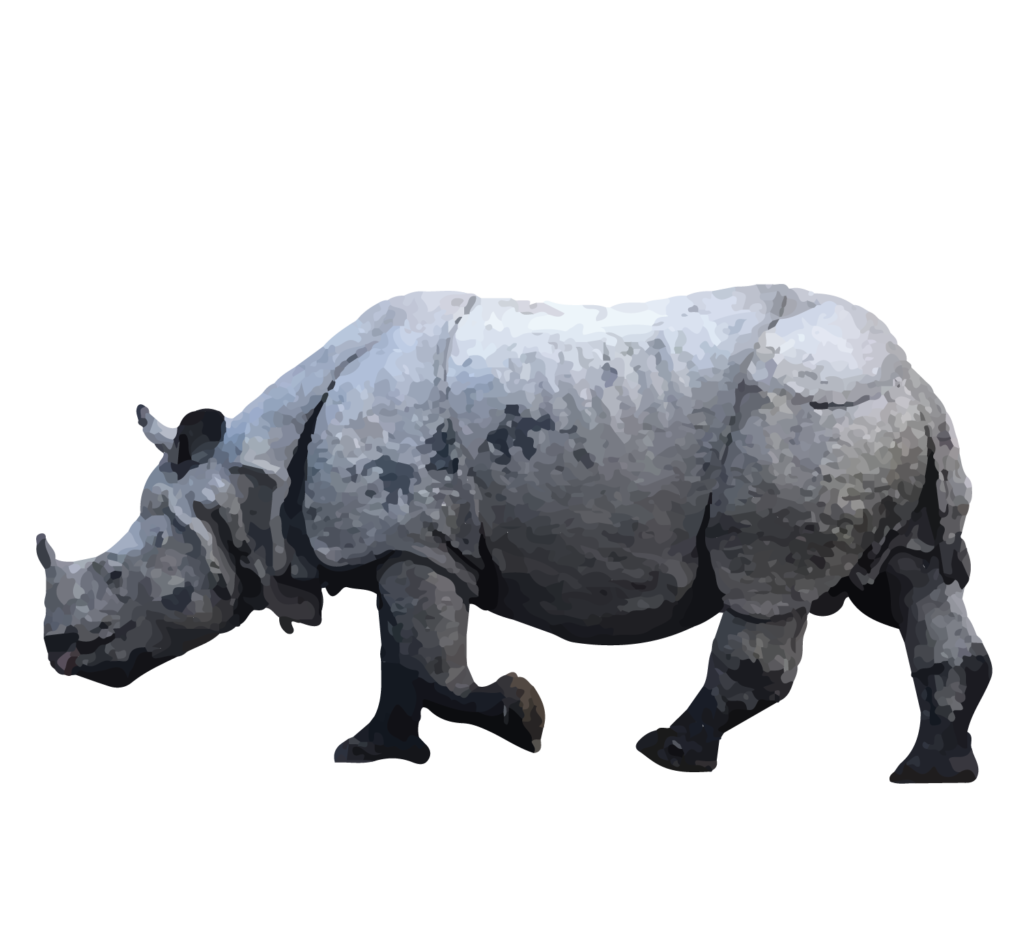Assam – Indian Rhinoceros

Common Name: Greater One-horned Rhinoceros
Local Name: Ekhingiya Gor (Assamese), Gainda (Hindi)
Scientific Name: Rhinoceros unicornis Linneaus
Description: The Greater One-horned rhinoceros is the largest rhino species on Earth. A male Indian rhino weighs around 2,100 to 2,200kg, while a female rhino weighs around 1600kg. The greyish brown hide with skin folds gives the rhino an armor-plated appearance. The greater one-horned rhino is identified by a single black horn, whose length typically varies between 20 to 61cm and weighs up to 3kg. The Horn is a mass of agglutinated hairs composed of keratin fibers, thereby forming a hard cemented mass. The horn of the rhino is usually used for defensive purposes and also for searching for food and foraging the roots. Rhinos normally lead a solitary life, but in some cases, many individuals may occupy the same area. Rhinos are primarily grazers and their diet consists of grasses, leaves, branches of shrubs and trees, aquatic plants, and fruits.
Threats: The Greater one-horn rhino is greatly threatened due to poaching for the illegal trade of rhino horn, habitat loss caused by the disappearance of alluvial plain grasslands, etc. Although there is no scientific evidence of its medicinal value, the rhino horn is used in traditional Asian medicines for the treatment of many ailments like epilepsy, cancer, fevers, etc. The requirement for land to house the burgeoning human population also greatly threatens the rhinos. This in turn leads to human-rhino conflict, as the rhinos frequently leave the boundaries of the protected areas to forage in the surrounding villages. The high population density of rhinos in some areas also leads to the lowering of their breeding rates.
